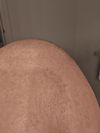
community Oral Min 2.5mg, oral fin 1mg, 2mm derma roller, discouraged by results after a month
The user is using oral Minoxidil 2.5 mg, oral Finasteride 1 mg, and a 2mm derma roller for hair loss but feels discouraged by the lack of results after a month. They are seeking advice and considering additional methods like antiandrogens, exercise, and dietary changes.


